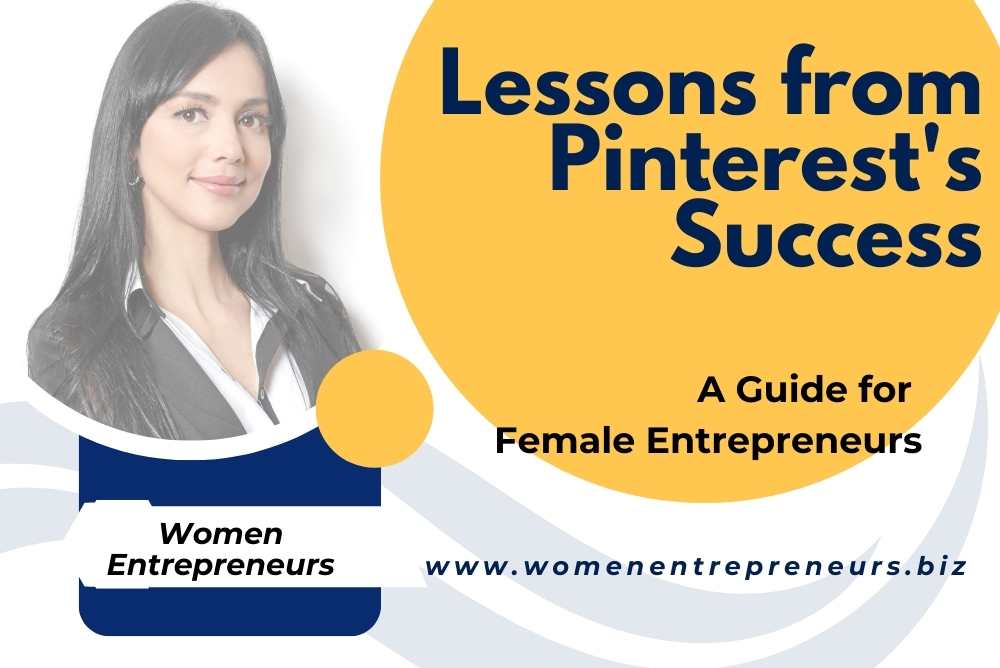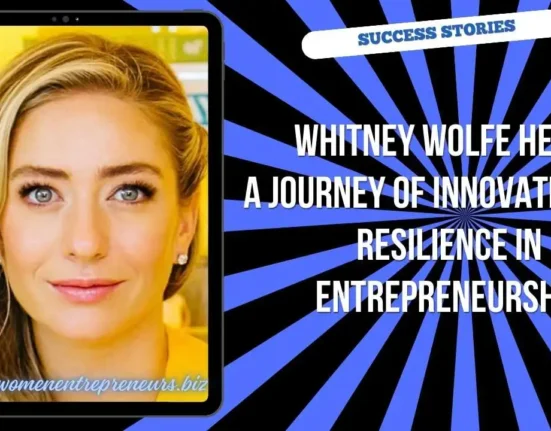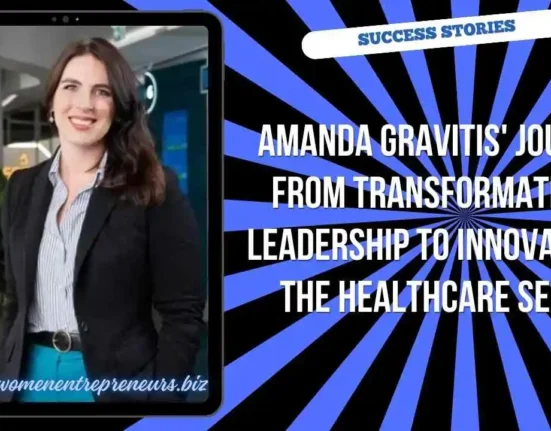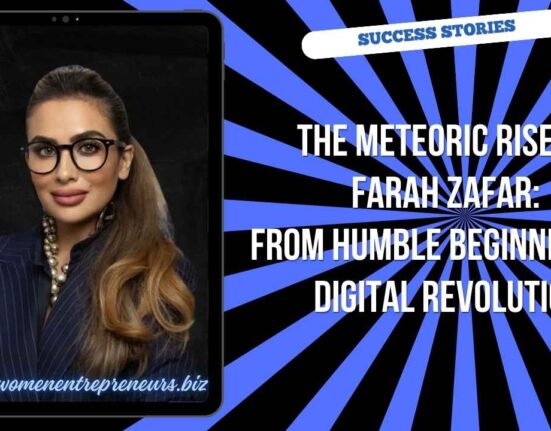Lessons from Pinterest’s Success: A Guide for Female Entrepreneurs
Table of Contents
Introduction
Pinterest, founded in 2010 by Ben Silbermann, Paul Sciarra, and Evan Sharp, has grown into a global visual discovery platform with over 400 million active users. Pinterest’s mission is to inspire users to discover and do what they love, making it a powerful tool for inspiration and creativity. The platform’s success is not just in its vast user base, but in its ability to connect people through shared interests and ideas.
This article will explore the key factors that contributed to Pinterest’s success, the lessons female entrepreneurs can learn from it, and the common mistakes to avoid when building a similar platform or business.
Introduction to Pinterest and Its Founders
The Creation of Pinterest
Pinterest began as a simple idea—a virtual pinboard where users could “pin” images they found inspiring. Ben Silbermann, inspired by his own love for collecting, wanted to create a digital space where people could collect and share their interests visually. Along with co-founders Paul Sciarra and Evan Sharp, Silbermann launched Pinterest in March 2010.
What set Pinterest apart from other social media platforms was its focus on discovery rather than networking. Users could explore a vast array of topics, from home décor to fashion, and find inspiration through images curated by others.
The Visionary Behind Pinterest: Ben Silbermann
Ben Silbermann’s passion for creating a product that resonated with people’s love for collecting was a driving force behind Pinterest’s success. His focus on user experience and community building helped shape Pinterest into a platform where creativity and inspiration thrive.
Silbermann’s approach to business was rooted in empathy and understanding the needs of users, which has been a cornerstone of Pinterest’s continued growth and relevance.
Key Success Factors of Pinterest
1. Understanding User Behavior
Pinterest’s success can largely be attributed to its deep understanding of user behavior. The platform tapped into a fundamental human activity—collecting and sharing ideas. By creating a space where users could visually organize their interests, Pinterest made the process of discovery both engaging and rewarding.
Lesson Learned: Female entrepreneurs should focus on understanding the behaviors and needs of their target audience. By aligning your product or service with these needs, you can create a more engaging and meaningful user experience.
2. Fostering a Positive Community
Pinterest has consistently prioritized creating a positive and supportive community. The platform encourages users to share ideas and inspire one another, fostering an environment where creativity is celebrated.
Lesson Learned: Building a positive community around your brand can enhance user loyalty and create a more supportive and engaged customer base. Female entrepreneurs should focus on cultivating a community that aligns with their brand values.
3. Emphasizing Visual Content
Pinterest’s emphasis on visual content has been a significant factor in its success. The platform’s design makes it easy for users to browse and discover new ideas visually, which is particularly appealing in today’s visually driven digital world.
Lesson Learned: Visual content is a powerful tool for engaging users. Female entrepreneurs should leverage visual content in their marketing strategies to capture attention and convey their brand message effectively.
4. Continuous Innovation
Pinterest has continually evolved since its launch, adding new features and tools to enhance user experience. From introducing buyable pins to integrating with other platforms, Pinterest has remained agile and responsive to market trends and user feedback.
Lesson Learned: Innovation is key to staying relevant in a competitive market. Female entrepreneurs should be open to evolving their products or services based on user feedback and market trends.
Mistakes to Avoid
1. Underestimating the Importance of Monetization Early On
Pinterest initially struggled with finding a sustainable revenue model. While the platform’s user base grew rapidly, it took several years before Pinterest introduced effective monetization strategies like promoted pins and shoppable features.
Mistake to Avoid: It’s important to think about monetization from the early stages of your business. Female entrepreneurs should explore different revenue models early on to ensure the long-term sustainability of their business.
2. Balancing Growth with User Experience
As Pinterest grew, there were times when the platform’s rapid expansion outpaced its ability to maintain a seamless user experience. This led to challenges in managing user expectations and maintaining the platform’s quality.
Mistake to Avoid: Growth should never come at the expense of user experience. Female entrepreneurs should focus on scaling their businesses in a way that preserves the quality and integrity of their product or service.
3. Navigating Competition
Pinterest faced significant competition from other social media platforms and visual discovery tools. Staying ahead of the competition required continuous innovation and a clear understanding of what made Pinterest unique.
Mistake to Avoid: Understand your competitive landscape and continuously innovate to maintain your market position. Female entrepreneurs should focus on what makes their business unique and capitalize on those strengths to stand out in a crowded market.
4. Ensuring Platform Diversity
While Pinterest has a broad user base, it was initially more popular among certain demographics, which limited its early growth potential. Expanding the platform’s appeal to a wider audience was crucial for its long-term success.
Mistake to Avoid: Diversify your audience to avoid limiting your growth potential. Female entrepreneurs should ensure that their product or service appeals to a broad and diverse audience.
How to Replicate Pinterest’s Success
1. Focus on User-Centric Design
Pinterest’s user-centric design was key to its success. By prioritizing ease of use and a visually appealing interface, Pinterest created a platform that was both intuitive and enjoyable to use.
Actionable Tip: Female entrepreneurs should focus on creating user-centric designs that enhance the overall experience of their product or service.
2. Build a Strong Brand Identity
Pinterest’s brand identity is centered around creativity, inspiration, and positivity. This strong identity has helped Pinterest build a loyal user base and stand out in a crowded market.
Actionable Tip: Developing a strong brand identity that resonates with your target audience can help you build loyalty and differentiate your business.
3. Leverage Data to Understand Your Audience
Pinterest has successfully used data to understand user behavior and preferences, allowing the platform to continuously refine its features and offerings.
Actionable Tip: Use data analytics to gain insights into your audience’s behavior and preferences. This can inform your product development and marketing strategies.
4. Foster a Collaborative Environment
Pinterest’s focus on community and collaboration has been integral to its success. The platform encourages users to share and collaborate, creating a more engaged and supportive user base.
Actionable Tip: Female entrepreneurs should foster a collaborative environment that encourages community building and customer engagement.
Conclusion
Pinterest’s journey from a simple idea to a global platform offers valuable lessons for female entrepreneurs. By focusing on user behavior, fostering a positive community, and continuously innovating, Pinterest has built a successful and sustainable business. However, it’s equally important to learn from the challenges Pinterest faced, such as the need for early monetization and balancing growth with user experience.
By applying these lessons, female entrepreneurs can build businesses that not only resonate with their target audience but also have the potential for long-term success.








